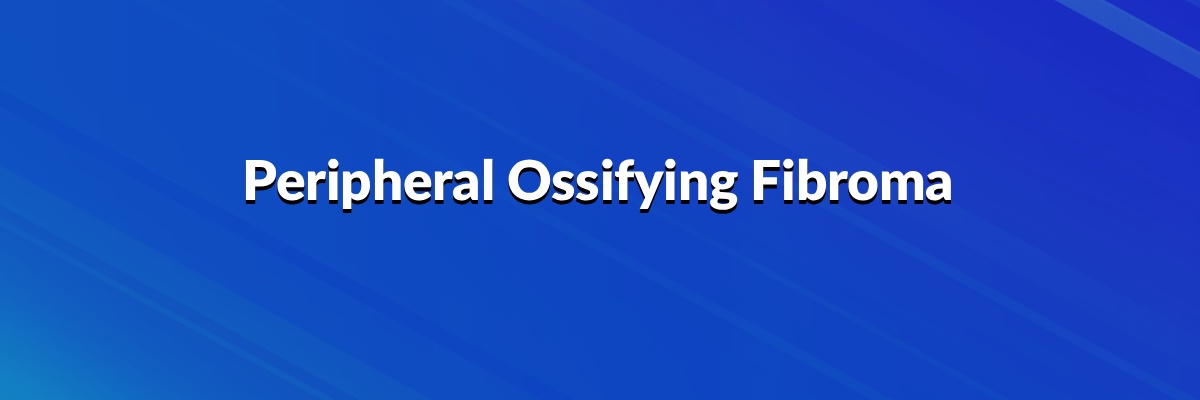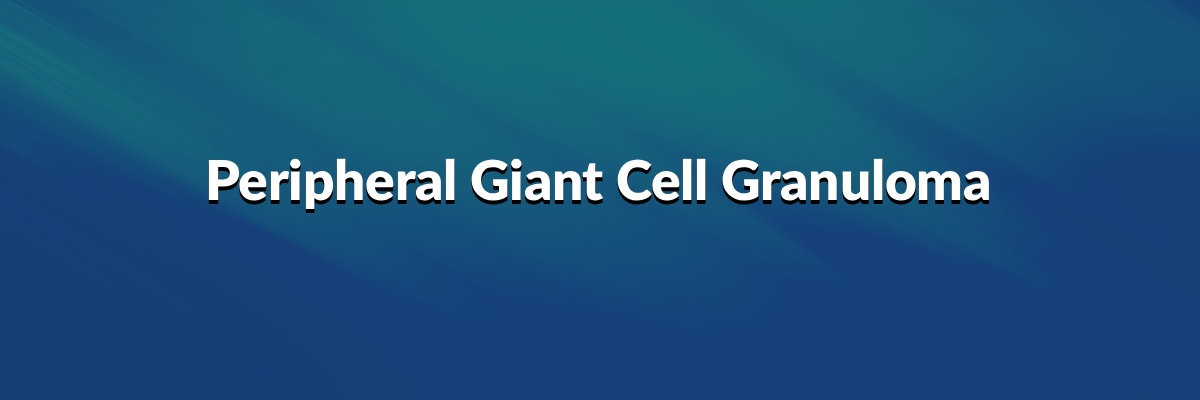Central giant cell tumors of the jaws are benign but aggressively destructive osteolytic lesions. These tumors represent benign tumors of osteoclastic origin. The tumor is not a true granuloma (not a cyst).
AKA
- Giant Cell Lesion, Giant Cell Tumor, formerly designated Giant Cell Reparative Granuloma (not a reparative response)
Cause
- Multifocal giant cell lesions of the jaws may occur rarely as an isolated finding or in association with certain heritable conditions, including Cherubism, Noonan-like/multiple giant cell lesion syndrome, Ramon syndrome, Jaffe-Campanacci syndrome, and NF type 1
Incidence
- The peak range of occurrence is between 5 and 15 years of age, although some cases develop in the 20s and 30s.
- Female > male (2:1)
- Mandible > Maxilla (3:1)
Location
- 70% in mandible.
- Most occurring in anterior mandible and can cross midline.
Clinical Presentation
- Presents as a painless clinical expansion that may have a short (2 week to 2 month) ascendancy. The expanded lesion may appear blue because of its cortical and mucosal thinning and internal vascularity.
- Occasionally, the rapid expansion will stretch the periosteum, producing pain.
- May be associated with pain, paresthesia, or perforation of the cortical bone plate, resulting in ulceration of the mucosal ulceration.
- On biopsy, will see red-brown friable tissue that is unencapsulated. Resembles granulation tissue hence given its inaccurate description central giant cell granuloma.
- Aggressive vs nonaggressive subtypes.
Radiographic Features
- Present as a multilocular, radiolucent lesion that severely thins the cortices, including the inferior border.
- Scallop the inferior border, displace teeth, and resorb interradicular bone.
- May resorb tooth roots to some degree.
Compare to
- A multilocular, expansile, radiolucent lesion in a child or teenager is suggestive of several lesions, most notably an odontogenic keratocyst, an odontogenic myxoma, an ameloblastic fibroma, or Langerhans cell histiocytosis. If the patient is older than 14 or 15 years, an ameloblastoma becomes a statistically more likely consideration as well. In addition, because of the bleeding potential, generally young age of presentation, and multilocular “soap bubble” radiolucency, a central arteriovenous hemangioma must
be considered. - Multilocular giant cell lesions cannot be distinguished radiographically from ameloblastomas or other multilocular lesions.
- Histopathologically identical to aneurysmal bone cyst and intermixed with central odontogenic fibromas.
- Histopathologically identical to brown tumor (hyperparathyroidism). Multifocal involvement in childhood suggests Cherubism.
Histopathology
- multinucleated giant cells in a background of ovoid to spindle-shaped mesenchymal cells and round monocyte-macrophages. Spindle cells recruit monocyte-macrophage precursors, inducing them to differentiate into osteoclastic giant cells by activation of the RANK/RANKL signaling pathways.
Treatment:
- If the lesion is determined to be any type of a giant cell tumor, it is prudent to obtain a serum calcium determination to rule out both primary and secondary hyperparathyroidism. A parathyroid hormone assay is not required because primary hyperparathyroidism of sufficient severity to produce a so-called brown tumor will evidence hypercalcemia, and secondary hyperparathyroidism of sufficient severity to produce a
brown tumor will evidence hypocalcemia. - Nonaggressive types are treated with curettage with recurrence of 10-20%.
- Aggressive types can be treated with corticosteroids, calcitonin or interferon alpha, imatinib, bisphosphonates (anti-angiogenic).
- Interferon alpha side effects: flu like symptoms, pancreatitis, drug induced lupus erythematosus
Two Types:
- Nonaggressive lesions make up most cases, exhibit few or no symptoms, demonstrate slow growth, and do not show cortical perforation or root resorption of teeth involved in the lesion.
- Aggressive lesions are characterized by pain, rapid growth, cortical perforation, and root resorption. They show a marked tendency to recur after treatment, compared with the nonaggressive types.









